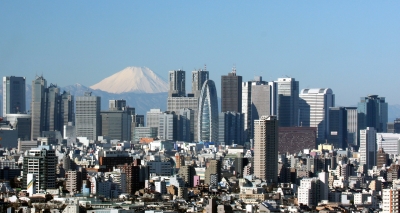
Until July 1853 Japan had been a land closed to all contacts with the west. No ports were open to Western ships, missionaries who tried to convert the people to Christianity were killed and all forms of Western culture were banned. But time did not stand still outside Japan. The early steamships that sailed across the Pacific Ocean needed places where they could replenish their fuel supplies and Japan was the ideal place for this. Despite much pressure from Western countries, however, Japan still remained closed to all their shipping.
The United States government then decided to send a squadron of naval ships under the command of Commodore Matthew c. Perry. Perry was told to persuade the Japanese to sign a treaty opening up some Japanese ports to Western ships. With two frigates and two sailing vessels he entered the fortified harbour of Urage on 8 July 1853. He refused to obey Japanese borders to leave and demanded that a suitable person be sent to receive the documents he had brought. The Japanese finally complied. Perry made a great impression on the Japanese dignitaries by his firm and dignified bearing. He returned with a larger force the following year and on 31 March 18564 the first treaty between the United States and Japan was signed.
By this treaty shipwrecked seamen were promised better treatment and American ships were able to obtain fuel and supplies at two Japanese ports. Japan’s traditional policy of isolation was broken and from that moment it established contact with the west. It was destined to become the leading country in the Far East and one of the world’s great powers. Only some fifty years later it subjected the Russian fleet to a crushing defeat.
Picture Credit : Google
